So, you’ve just published an amazing blog post, and you’re super excited to see it rake in clicks and engagement.
But as the days go by, you notice something odd: your post is getting a ton of impressions, but not nearly as many clicks as you’d expect.
Frustrating, right?
Fear not, because we’re here to explore this conundrum and help you figure out how to turn things around.
Sometimes, a high number of impressions but low clicks can simply be a result of your post being new.
You see when a blog post is freshly published, it’s like a tender piece of steak that needs some time to “marinate” in the vast sea of Google’s search results.
As the algorithms work their magic and the post settles into its rightful place, you might start seeing the clicks rolling in.
But if you’re still struggling to understand why your post isn’t getting the attention it deserves, let’s dive deeper and discuss some possible reasons and solutions.
But First, What Is an Impression?
Before we dive into the nitty-gritty, it’s essential to understand what an “impression” actually means in the context of Google Search Console.
An impression occurs when a user sees a link to your blog post on a search engine results page, whether they click on it or not.
So every time your post shows up in someone’s search results, it counts as an impression.
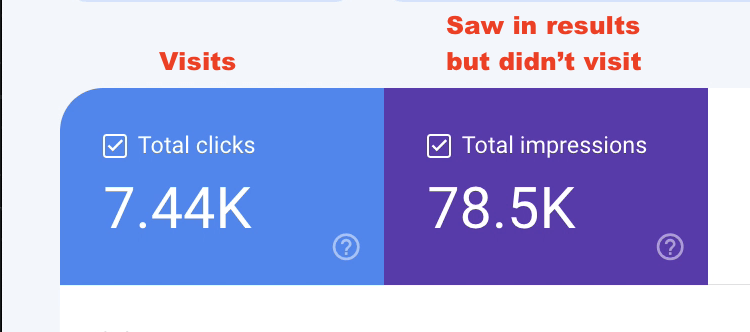
So only a fraction of impressions actually turn into website visitors! 🙂
With that cleared up, let’s move on to explore the reasons behind the high impressions but low clicks conundrum and how you can tackle it.
Reasons for High Impressions with Low Clicks
Here are some of the most common reasons I’ve seen that contribute to high impressions and low clicks.
#1 Your Post Is New
As we mentioned earlier, one of the most common reasons for a blog post having high impressions but a low click-through rate (CTR) is that it’s simply too new.
Google and other search engines take time to crawl, index, and evaluate the quality of your content before it starts to rank higher in the search results.
For example, look at this blog post I published a long time ago. After 10 months of publishing, the post still trended upward.
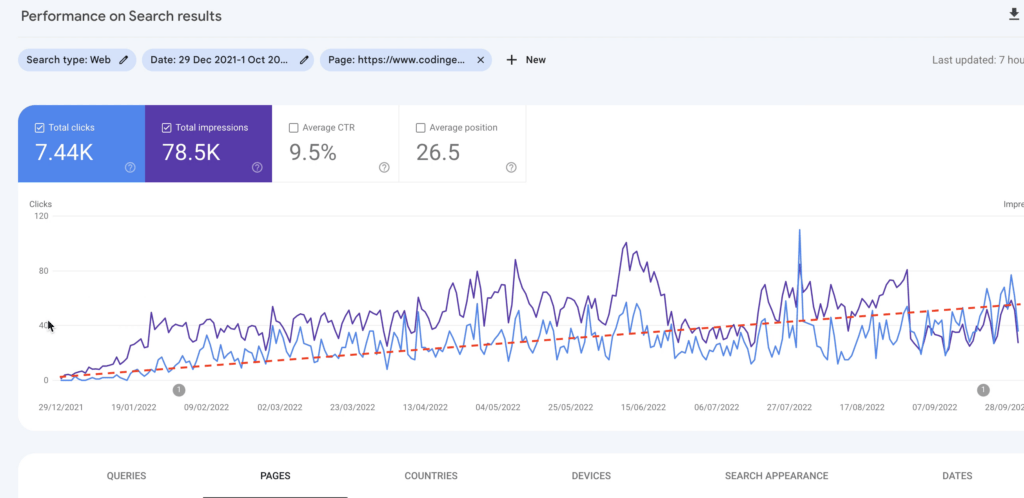
So, what’s happening behind the scenes?
Well, search engines use complex algorithms to determine the relevancy and value of your content to users.
When you first publish a post, it hasn’t yet had the chance to accumulate valuable engagement metrics (like clicks, time on page, and social shares) that search engines use to assess its worthiness.
In my experience, it takes about 6-12 months for a blog post to “settle” in the search rankings (depending on the competition and quality of your content).
During this time, your post will be in a sort of “testing phase,” where search engines are gauging how well it performs against other content in the same niche.
The takeaway here is that patience is key.
If your blog post is relatively new, don’t be disheartened by the low CTR.
Give it time to mature and accumulate engagement signals, and you’ll likely see its ranking and clicks improve over time.
#2 You Rank for “Impossible” Keywords
An “impossible keyword” is a search term for which your blog post might rank high, but it’s difficult (if not impossible) to ever claim the #1 spot.
This is usually because the keyword is directly tied to a specific company, product, or organization.
People searching for it are likely looking for the official page rather than your blog post.
For example, I wrote a blog post “Jenni AI Review” and it happened to rank #4 for the keyword “Jenni AI”—one of the most popular AI writing tools.
But my blog post’s CTR is only 0.3%—even when ranking so high!
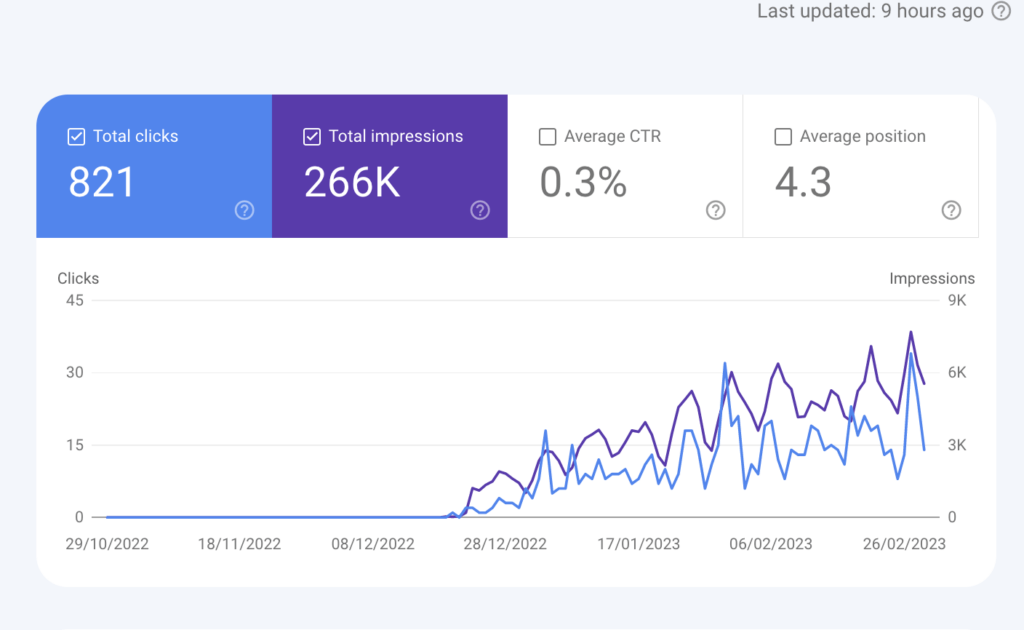
While the number of impressions is great, it’s unlikely that I’ll ever outrank the official Jenni AI website. This is because, well, they’re the authority on their own brand.
Furthermore, people searching for “Jenni AI” are more interested in visiting the official page than a random review of the product.
Anyway, in cases like this, your blog post might receive a high number of impressions, but the CTR will be low. The users are more inclined to click on the official page that ranks above yours.
#3 Image Impression Surprize
Now let’s dive into reason number 3 for high impressions with low clicks: the “accidental” high-ranking image scenario.
This situation occurs when an image from your blog post ranks high in the regular Google search results, not just in the “image search.”
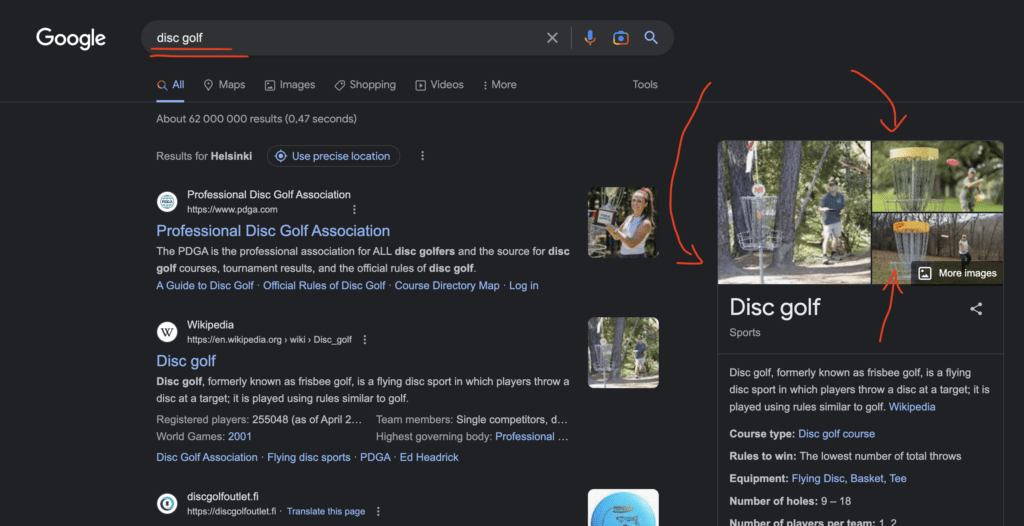
Sometimes, Google decides to feature images among text-based results, and this can impact your CTR.
For example, this happened to me with a crazy popular keyword “Pythagorean theorem”. I ranked in the top for that search phrase—but with an image.
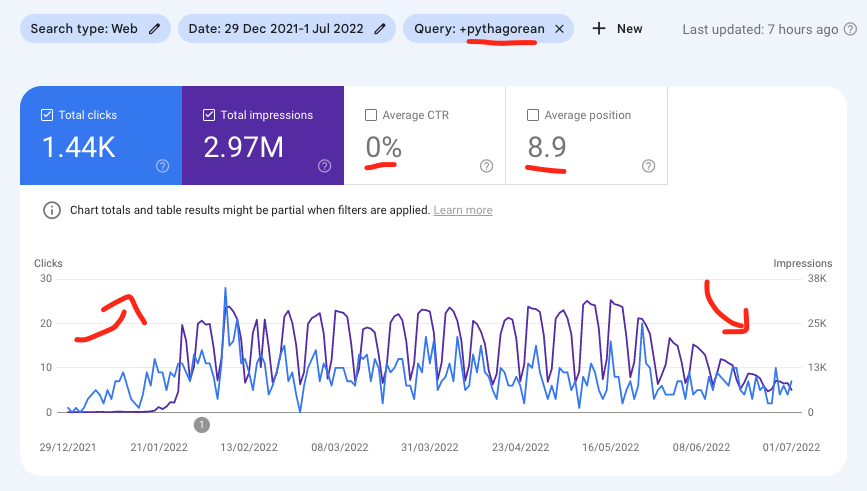
As a result, about 10-20% of my entire site’s impressions came from that one image. But basically, no one clicked through—only 1 in 2,000.
Nonetheless, why does this happen?
Well, search engines like Google are constantly looking for ways to improve user experience.
They recognize that some users prefer visual information over text, so they might include relevant images in the search results to cater to these users.
While this can be great for visibility, it can also lead to high impressions and low clicks for your blog post. This isn’t necessarily bad but can confuse beginners. 🙂
The reason for the low clicks is that many users might not feel the need to click on the image or the link to your blog post if they believe the image itself provides the information they’re looking for.
Essentially, the image might be answering their query without them having to visit your blog.
To illustrate this, imagine you have a blog post about “Quick and Easy Pasta Recipe.”
Now, imagine that an image of the recipe ranks high on search results.
The visitor might see this image, get a general idea of the recipe, and decide they don’t need to click on your blog post to find out more.
#4 Bad Title (Unlikely)
Moving on to the fourth reason for high impressions and low clicks: a bad title.
While a poorly crafted title can negatively affect your blog post’s CTR, it’s important to note that this is less likely to be the main culprit especially if your CTR is low (like 0.1-5%).
In such cases, the earlier-mentioned reasons are more probable causes. That said, optimizing your title can still make a significant difference in boosting your CTR.
To put it into perspective, improving your title might not skyrocket your CTR, but it could lead to noticeable increases, like going from 20% to 23%.
While this may not seem like a massive change, it’s still a noteworthy improvement, especially for a relatively small tweak.

So, how can you make your title more appealing and clickable?
(By the way, this is something I’d recommend doing anyway—even if you have no issues with CTR.)
Here are a few strategies to help your headlines stand out from the crowd:
- Make it intriguing: A captivating title sparks curiosity and encourages users to click on your post to find out more. Use questions, surprising facts, or strong statements to pique the reader’s interest.
- Use numbers: Studies have shown that headlines with numbers tend to perform better. Using numbers can make your title feel more tangible and specific, like “7 Easy Steps to Improve Your Writing.”
- Be clear and concise: Users should be able to quickly understand what your blog post is about. Be short and concise. Reveal the topic of your post immediately. For example “7 Best Restaurants” over “What Are Some of the Absolute Best Restaurants”
- Use powerful words: Emotional, descriptive, and trustworthy language can make your title more compelling. Think of words like “ultimate,” “essential,” or “unbelievable” to add weight to your title. Also, think about a phrase like “tested by” in a product review.
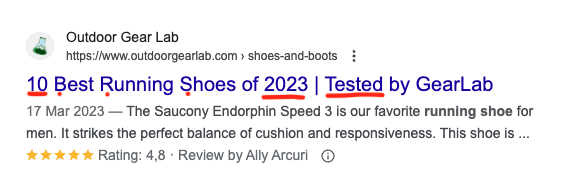
By keeping these tips in mind and continually refining your headlines, you’ll be well on your way to improving your blog post’s CTR and overall performance.
Wrapping Up
And there you have it. Make sure to watch my free masterclass to grow your blog the right way.
